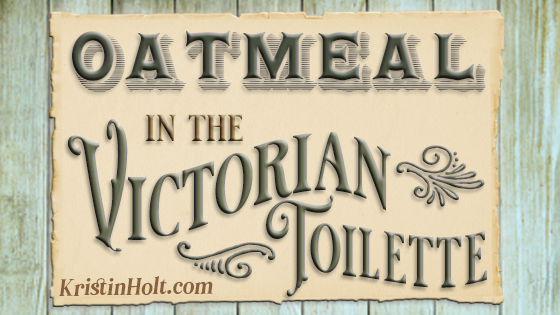
by Kristin Holt | Aug 5, 2021 | Articles
Victorians took their hair seriously: “Want Good Hair?” asked Godey’s Lady’s Book (1861). Throughout the nineteenth century, much advice circulated in magazines, newspapers, and cook books regarding how to cleanse hair (long before shampoo was invented), use of combs, whether or not to cut kids’ hair and more!

by Kristin Holt | Jul 25, 2019 | Articles
In an 1879 essay by Henry Ward Beecher, he persuades all to see that Old Maids may make the best of wives, for their youthful ways often pass right along with their marriageable years. Come mid-twenties, when a woman is an Old Maid, he argues she’s come into her prime of womanhood.
Beecher was, it seems, concerned about appearance.
What about those ladies who are consistently kind, gracious, and pleasant to be with? What of those good girls who finds no fault and never complains. Perhaps this Best Woman did make for the Best Victorian Wives.

by Kristin Holt | Jul 22, 2019 | Articles
A well-known New York Phrenologist gives late-Victorian-era American romance advice. “Blondes are Favorites,” he declared, backing up this observation with Phrenology. Much hymeneal wisdom packed into one interview, contained in the vintage newspaper article that sprang from a newspaperman interviewing the phrenologist. While affable blondes are best, beware of “Women of Genius” (those inclined to education and adopting “masculine” attributes such as self-protection and self-support). Victorian attitudes and perspectives circa 1890 shed much light on cultural norms.
Part of blog series: Who Makes the Best (Victorian) Wives?

by Kristin Holt | May 21, 2019 | Articles
In this Blog Article Series about Victorians and Oatmeal, we’ve seen cookies (both with and without raisins), Victorian attitudes about oats for food (rather than fodder), and vintage newspaper clippings highlighting the attitudes of some American Victorians. This article is still about oatmeal–and Victorian woman using those rolled oats in bath sachets to soften the skin. See the Victorian-American bath sachet recipe(s).

by Kristin Holt | May 18, 2017 | Articles
An unnamed Dress Reformer, utterly against “tight lacing” (corsets), uses the art of poetry to explain that everything that ills a woman–from her attitude to her nature, from length of life to a red-tipped nose–is all a result of the ill-fated habit of tightly cinched corsets. This vintage newspaper publication is an example of the American Victorian’s use of humor to blame fashion on craziness with a price too steep to pay.













